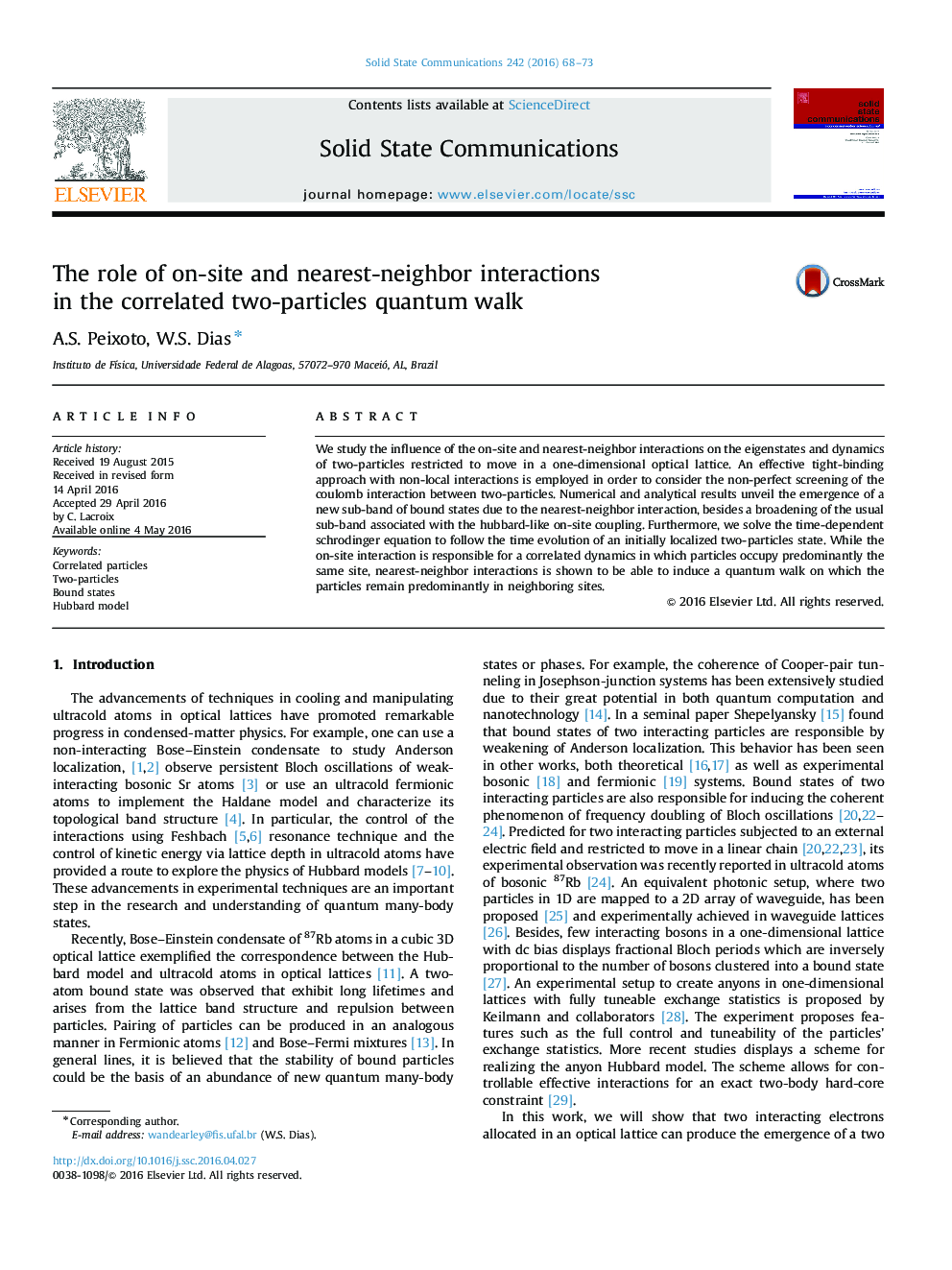| Article ID | Journal | Published Year | Pages | File Type |
|---|---|---|---|---|
| 1591116 | Solid State Communications | 2016 | 6 Pages |
•We show the emergence of a new subband of bound states.•These bound states can promote a correlated quantum walk.•The broadening of the usual sub-band is associated with the on-site interaction U.•On-site interaction U induces the particles to occupy predominantly the same site.•Non-local interaction V induces the particles keep themselves in neighboring sites.•The correlated hopping displays a non-monotonic dependence as a function of the U.
We study the influence of the on-site and nearest-neighbor interactions on the eigenstates and dynamics of two-particles restricted to move in a one-dimensional optical lattice. An effective tight-binding approach with non-local interactions is employed in order to consider the non-perfect screening of the coulomb interaction between two-particles. Numerical and analytical results unveil the emergence of a new sub-band of bound states due to the nearest-neighbor interaction, besides a broadening of the usual sub-band associated with the hubbard-like on-site coupling. Furthermore, we solve the time-dependent schrodinger equation to follow the time evolution of an initially localized two-particles state. While the on-site interaction is responsible for a correlated dynamics in which particles occupy predominantly the same site, nearest-neighbor interactions is shown to be able to induce a quantum walk on which the particles remain predominantly in neighboring sites.
